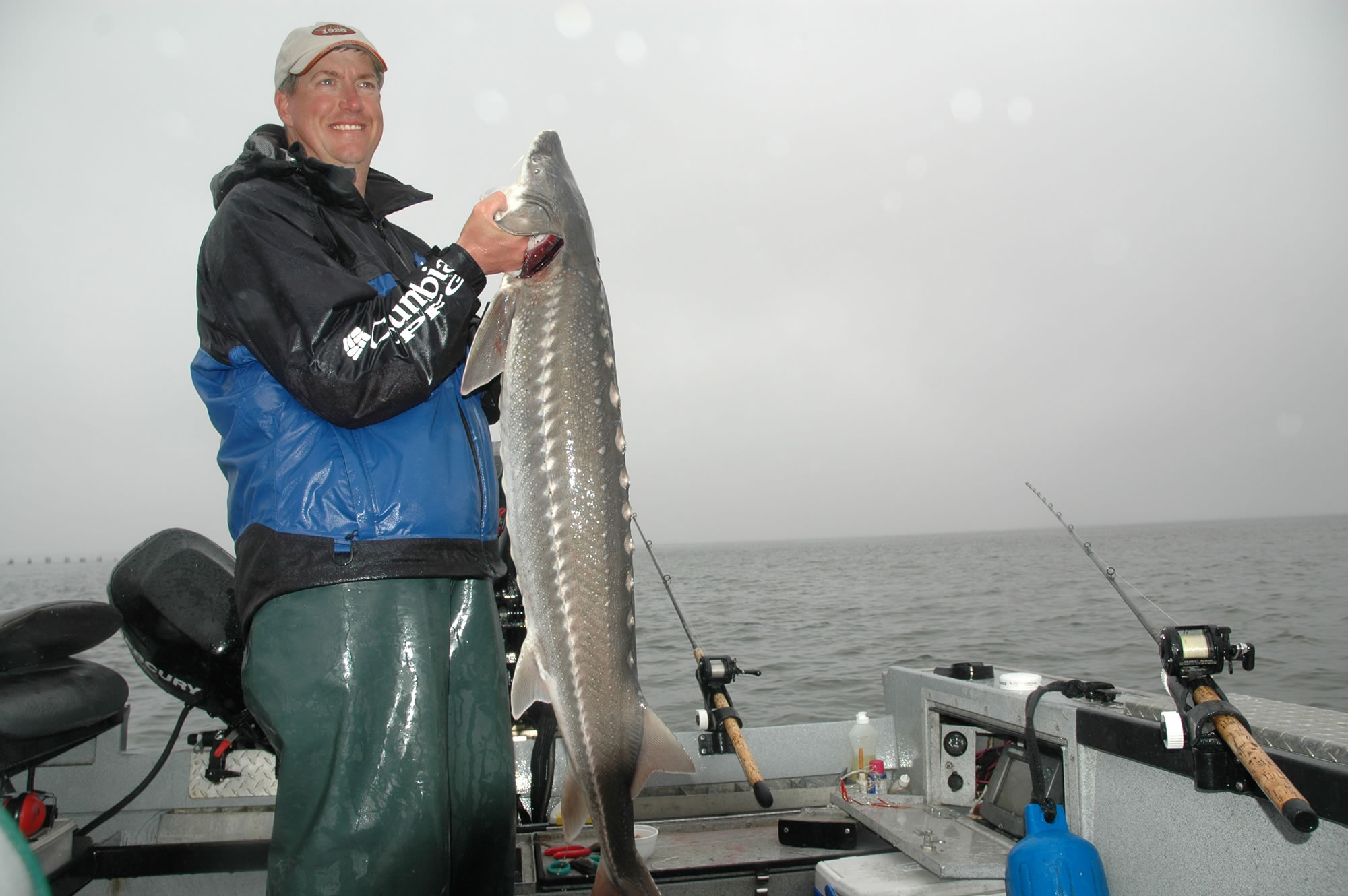Washington and Oregon will adopt a new Columbia River sturgeon accord for 2013 and beyond. The No. 1 question is: Will fishing shift solely to catch-and-release?
Eliminating sturgeon retention in both the sport and commercial fisheries got widespread support at a public meeting in Portland last week, one of six sessions to gather opinion on future management of the declining population.
“Shut it down to catch-and-keep fishing,” said Lance Beckman of White Salmon, a retired federal research biologist who studied sturgeon in several locales. “Fishing is really slow. Knowledgeable fishermen just aren’t catching fish — keepers or otherwise.”
Eric Linde of Vancouver, a guide for 12 years, said the Columbia Gorge is a “wasteland” for sturgeon fishing. Anglers catch few sublegals, keepers or oversize sturgeon, he added.
Sturgeon in the gorge used to be seen jumping, used to get caught on salmon lures, used to be seen feeding on shad.
But not any more.
“If you get a bite, it’s a big deal,” Linde said. “I think this is a catastrophic collapse. I vote for catch and release.”
Tony Nigro of the Oregon Department of Fish and Wildlife said the population of legal-size (38 to 54 inches) sturgeon has dropped steadily in the past few years.
The legal-size population estimate was 80,000 fish in 2011 and is 65,000 fish in 2012. Sturgeon harvests were cut 40 percent in 2010, 30 percent in 2011 and 38 percent for 2012.
The good news is Washington and Oregon expect to see the legal-size population increase to about 115,000 in 2013 as more sturgeon reach 38 inches.
The bad news is the states expect the population to drop again in a few years as sampling shows a decline in the number of younger age fish.
“Our concern is a hole in the juvenile fish coming up that we’ll see pretty soon,” Nigro said.
Harry Barber of Washougal, a member of the bi-state Columbia River Recreational Advisory Group, said the threshold question is if there should be retention.
If retention continues, what is a low enough harvest level to assure the population will rebuild, Barber asked.
“The population has tanked and people should be held accountable,” Barber said.
Jim Bridwell of Portland, also an advisory group member, said a ban on sturgeon retention needs to apply to the Columbia River gillnetters, too.
“Growing the population should be the Nos. 1, 2 and 3 goals,” he said.
Larry Swanson of Vancouver, another advisory group member, said to continue with the status quo in 2013, trying one more year with a small harvest.
Barber said most commercial fall chinook salmon fishing now is upstream of the mouth of the Lewis River, an area typically used by sturgeon that time of year.
In the fall, the river is warm and there is no “soak-time limit” (a time limit on how long the net can be fished before recovered and the catch removed).
Barber asked state biologists if the handle and release of oversize sturgeon in fall gillnet fishing is a contributor to reduced spawning the following spring.
Beckman said ending sturgeon harvest will not be enough to recover the population.
“I’m a firm believer in hatchery supplementation,” he said. “It seems to fall on deaf ears in the Northwest.
He called for an aggressive hatchery program as soon as possible.
“We’re out of time,” Beckman said. “If you start tomorrow, it will be 25 years before you see the contribution to the sturgeon fishery.”




